How to survive on the street on a motorcycle: A look at the statistics
It’s a sunny August summer day and the temperature is perfect. You are commuting home from work on a normal Wednesday afternoon in city traffic, and pull up to an intersection. You may not know it, but you have just entered the statistically most dangerous situation on your motorcycle.
By Jen Dunstan Courtesy Revzilla
Motorcycle-related deaths are on the rise. The National Highway Traffic Safety Administration's (NHTSA) Fatality Analysis Reporting System (FARS) shows a 20% increase over the past 10 years, and recently reported a 8% increase between 2020 and 2021 alone. The nearly 6,000 motorcyclist deaths in 2021 were the most in one year since NHTSA began recording incidents in the 1970s. This is troubling news, but what can riders do to reverse the trend? If we dig deep into the data, the answer to our salvation might be closer than we know.
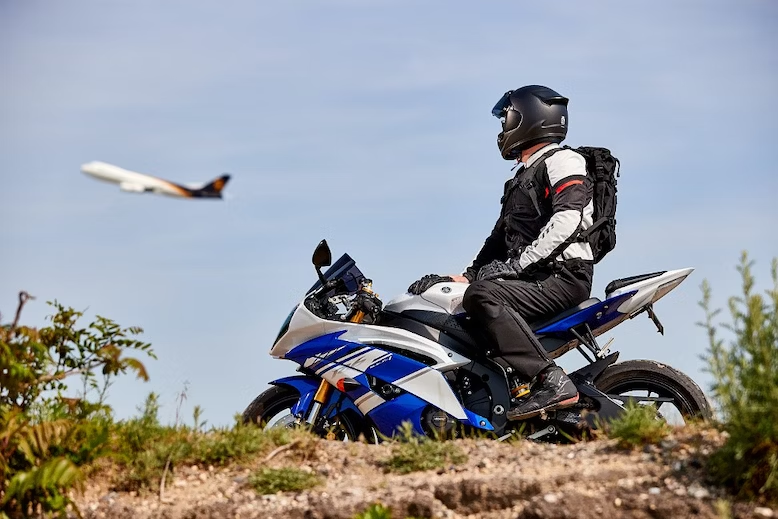
Commercial airline travel registers 0.1 fatality per 100 million passenger miles traveled, compared to 22.10 for motorcycle travel. Aren’t statistics fun! Photo by Luke Darigan.
Truth in numbers
In 2021, 5,932 motorcyclists died on U.S roadways, accounting for 14% of all traffic fatalities. On top of that, an estimated 82,686 motorcyclists were injured, a 5% increase over the previous year. It’s no surprise that motorcycles aren’t as safe as other vehicles on the road, but just how large is that disparity? NHTSA calculated that per mile traveled in 2021, the number of deaths on motorcycles in the United States was nearly 24 times the number in relation to cars.
Why such a dramatic disparity? Lucky for us, the NHTSA does a fantastic job of researching the morbid details around these accidents and publishing the data for the public to see. Like a mystic reading tea leaves, it's entrancing to try to make sense of it all.
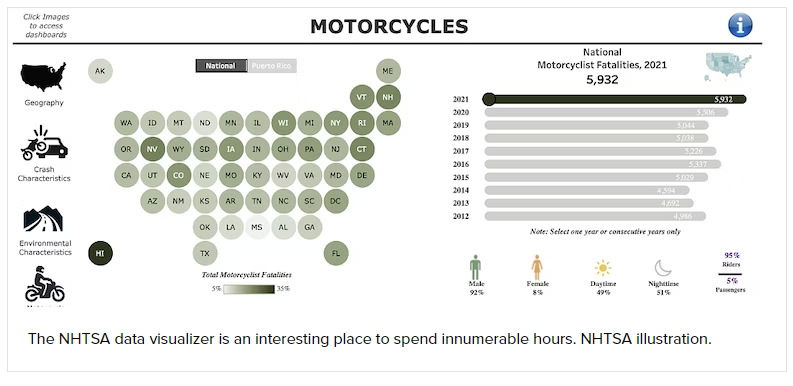
Single-vehicle versus multi-vehicle stats
Riders often like to place the blame on drivers, frequently stating that it is they who hit motorcycles. That isn’t the whole story, though. NHTSA reports that in 2020 57% of fatal crashes were multi-vehicle, while 43% of crashes involved just the motorcycle. That is no small percentage.
In the case of multi-vehicle accidents, the dreaded left-turning vehicle is the chief cause. 43% of the time to be exact, while both motorcycle and car traveling straight and colliding account for 21% of fatalities. While vigilance keeping your motorcycle in gear and watching your six at stoplights are still good practice, rear-end collisions only account for 8% of multi-vehicle fatalities.
Acknowledging rider error
When examining commonalities across all fatal motorcycle accidents in the NHTSA report, the four horsemen to be aware of are clear: not wearing a helmet, drinking while riding, speeding, and lack of a motorcycle license. We have covered some of these factors in the past, but let’s take a look at the math of these potentially reversible trends in the data.
First for review is that 39% of all motorcycle fatalities involved unhelmeted riders. In states without a helmet law, that percentage jumps up to 55%, whereas states with a universal helmet law have a much smaller figure around 9%. The importance of wearing a helmet is covered extensively in our helmet laws video and it is full of more safety statistics to mull over.
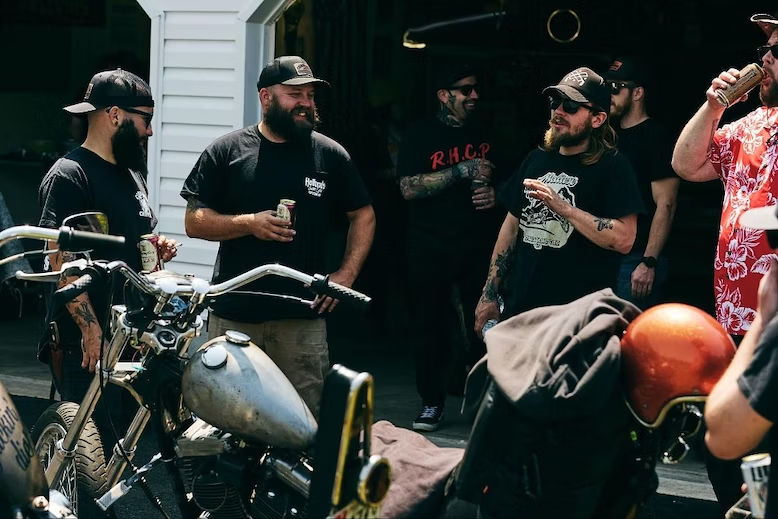
Having a drink at the end of the ride is fine, but please avoid drinking during the ride. Photo by Luke Darigan.
Next, 26% of all motorcycle fatalities involve alcohol. For incidents in which a motorcyclist collided with a stationary object, 41% of the time they were under the influence of alcohol. These stats are tragically avoidable. The obvious answer is “don’t drink and ride!” It may be easy to wag a finger on this one, but there are many ways riders can be seduced into this poor decision. A lot of bike nights, poker runs, rallies, and events congregate at some sort of watering hole. Many riders succumb to this subconscious urge to social drink.
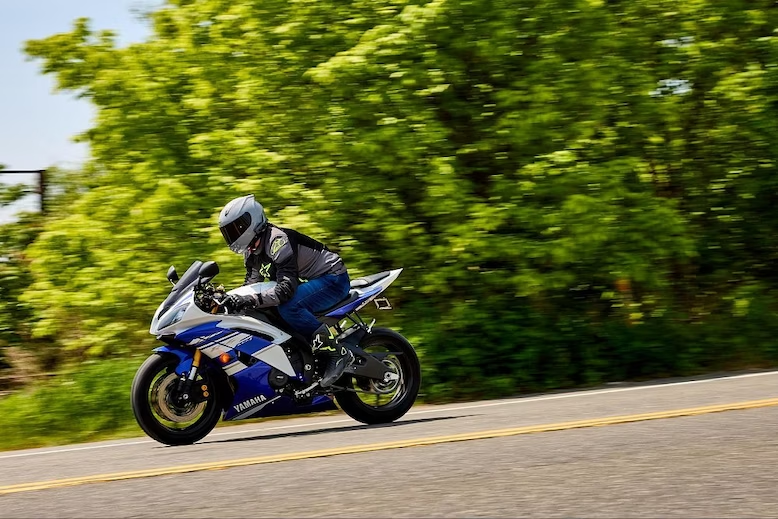
Slow down, cowboy! A slower pace can make a difference in whether you stop in time for an unplanned obstacle on the road. Photo by Luke Darigan.
Speeding — we’ve all done it. Sometimes, it leads to bad consequences, such as 34% of the motorcycle fatalities that were reported in 2020. The truth is even modest speeds slightly over the limit can have serious consequences. If you are traveling at 35 mph you will cover 51 feet per second. Compare that to 50 mph and you will cover a distance of 73 feet per second. Now imagine a rider decides to go 50 mph in a 35 mph zone, and a car pulls out in front of them. That 22 feet disparity can mean the difference between a life-threatening collision or riding home to tell the story.
The final of these top threats is the most shrouded in mystery. In black and white, 36% of all motorcycle fatalities involve a rider who has no motorcycle license. There is a lot that can be read into this stat, and it invites more questions than answers. Do these riders have learner's permits? How old are they? How long have they been riding? While it is sad to think that our newest members to the riding tribe are at greater risk, this stat doesn’t give us all the necessary information to assume it is only new riders.
Just because a rider is lacking the DMV credentials, it doesn’t mean that they aren’t well versed in operating a motorcycle. Many lifelong dirt bike riders hop onto street machines without a license, and many street riders (for whatever reasons) simply keep re-upping their learner's permit and never go the full distance of obtaining their license. Not to mention riders who move to a new state that does not acknowledge license reciprocity and they neglect to reinstate it.
FARS also reports that motorcycle riders involved in fatal crashes were 1.2 times more likely than passenger car drivers to have previous license suspensions or revocations. In these instances, it can be a lethal combination of improper training and poor decision-making that impact this data set.
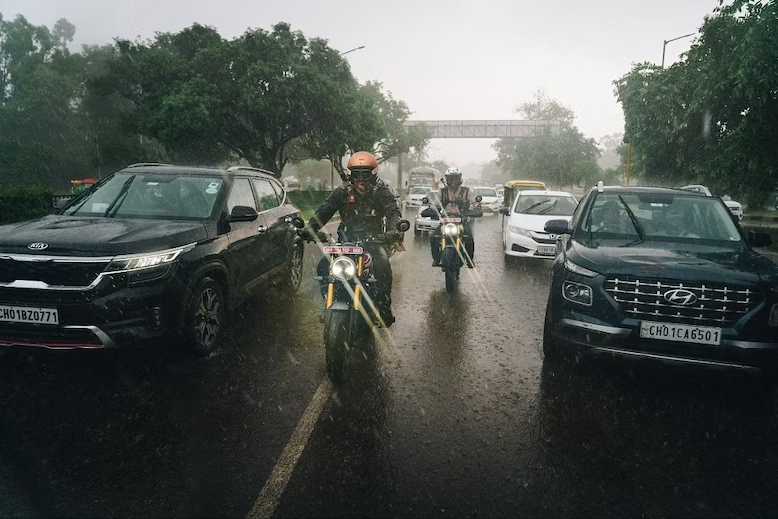
NHTSA statistics say that few fatal accidents happen in the rain. Is it because rain is less dangerous, or is it because most riders choose to stay home instead? Photo by Spenser Robert.
A product of the environment
Close your eyes and picture the most dangerous conditions you can for a motorcycle accident. Is it a cold, stormy interstate freeway? Or an icy country back road with ominous fog? In reality, the NHTSA statistics paint a very different picture.
Remember that bright, sunny city intersection at the beginning of this article? It is this scenario where most riders will be seriously injured or killed. Not what you were expecting? Read on.
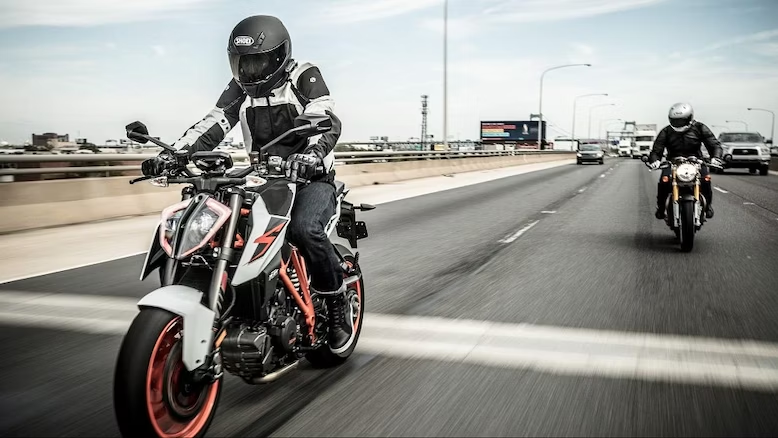
Despite the faster speeds, the highway isn’t the most dangerous road you will ride on — statistically speaking of course. Photo by Luke Darigan.
Despite the faster speeds and traffic volume, FARS reports that only 8% of motorcycle fatalities occur on Interstate highways. Six out of 10 motorcycle fatalities happen in urban areas, compared to rural roads, and more than one third of all motorcycle fatalities happen at an intersection. On a weekday, most of these accidents will occur between 3 p.m. and 6 p.m. in the height of rush-hour traffic. On the weekend, the most dangerous hours for bikes occur between 6 p.m. and 9 p.m., when nightlife traffic comes out to play. This time block is also when most drunk riders sadly make the FARS list, as 40% of alcohol-related rider deaths are recorded in the evening hours.
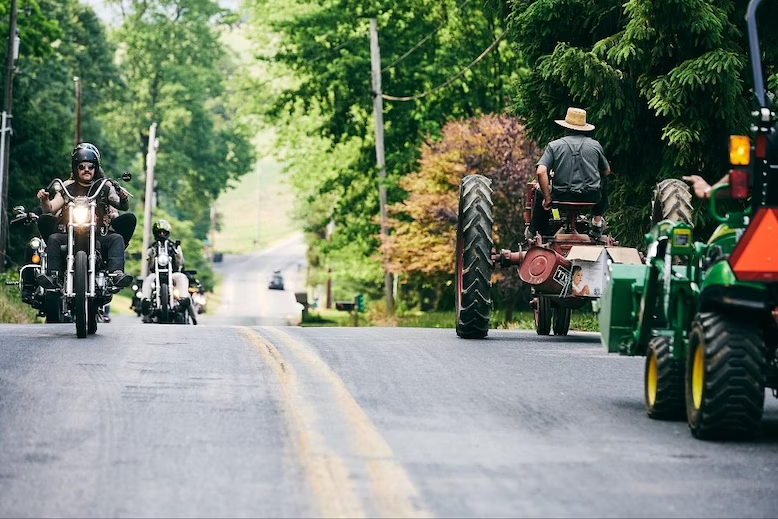

According to the NHTSA, rural areas see significantly fewer fatal accidents compared to urban areas. Photo by Luke Darigan.
How about that weather though? Only 2% of all fatalities occurred in rainy weather, and only 1% in the fog. That leaves a whopping 97% of the worst accidents occurring in dry conditions, 57% of it in daylight and 39% at nighttime. What this data set doesn’t state is the obvious — bikers like to ride on nice days and not rainy ones, hence the exaggerated and misleading data point.
The same holds true for the most dangerous months of the year. In 2020, August saw the largest influx of accident data, whereas January was the quietest month. That white fluffy cold stuff many parts of the country get blanketed in might have something to do with it. The point is, riders should still exercise a healthy level of caution riding in inclement weather and low-visibility conditions, despite what the statistics show here.
There are plenty of other figures from the NHTSA reporting that claim one thing, but more context can lead to contradictory conclusions. Take for instance the statistic that riders of the 25-to-29 age group are most likely to die in an accident. At face value that is true, but a closer look at the demographics shows a near negligible shift in percentage points for all age groups above 25 years of age. Truth be told, the average age of fatalities registers at 43. This makes a lot more sense considering the average age of motorcycle owners in the United States is 50 years old.
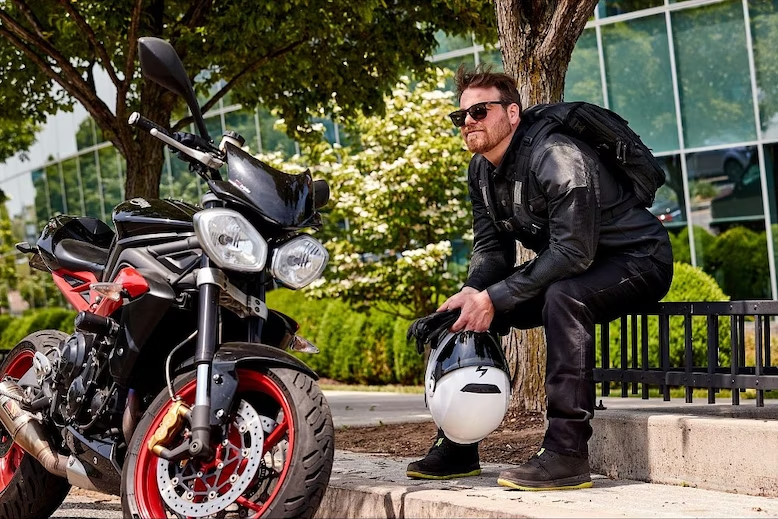
You have more control over the situation than you may think. Read on for our top tips to improve your odds on the street. Photo by Luke Darigan.
Data to live by
There are mountains of information that FARS collects, and NHTSA helpfully distills most of that down into sizable chunks. From those boulders, here are some gems to help improve your odds on the road.
- Wear a helmet at all times on a motorcycle. There are great options for all budgets and styles. Check out our helmet guide if you need pointing in the right direction.
- Do not drink and ride. Here are some strategies I employ to avoid the temptation: Order a non-alcoholic beer or a mocktail (still refreshing!), focus on treats rather than drinks (hello ice cream or coffee stops), make lodging arrangements if you do want to drink at your destination.
- Slow down. Especially in congested areas.
- Get your license, and never stop rider training.
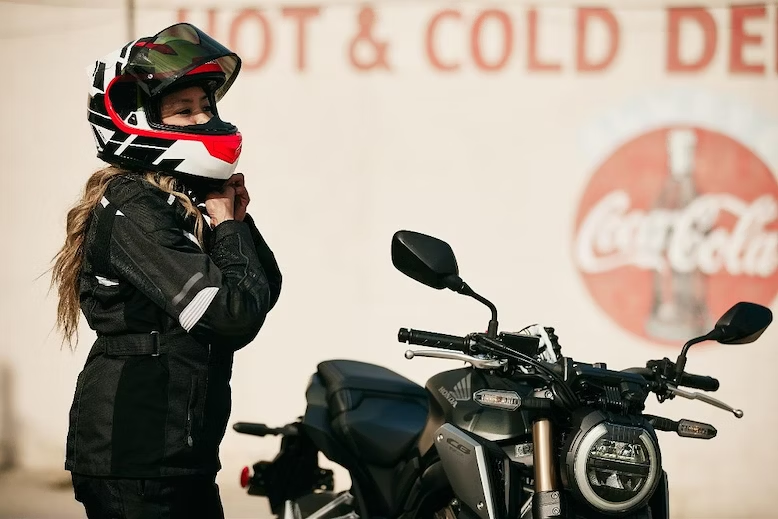
Wearing a helmet is one of the most important actions you can take to improve your odds when riding on the street. Photo by Luke Darigan.
I want to put extra emphasis on the last bullet point of “never stop rider training.” The first three are fairly easy and straightforward actions, but improving your riding skills will take more time and commitment. We cannot control what drivers are doing around us, but our comfort level and skill on the motorcycle can really skew the odds in our favor. Consider this as a wake-up call to get back to a riding school. Not only will advanced rider training better hone your physical technique on the bike, but it will also sharpen your mental aptitude, as well.
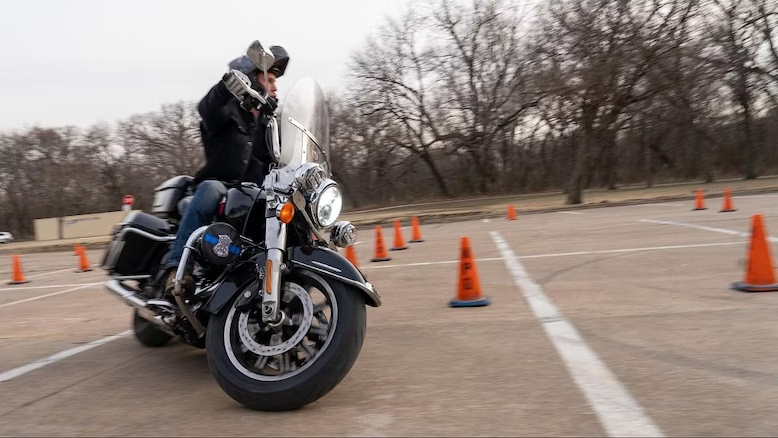
There is still a lot to be learned on a cone course, even for seasoned riders. Photo by Spenser Robert.
Defensive riding is more than a skill. It's a philosophy, a way of life on the bike. Far too often it is used as a casual term, but the real practice of defensive riding is immense and critical to your safety. Many advanced rider courses are expanding on their training in these mental practices, and if there isn’t one near you perhaps consider checking out an online training course.
Francis Bacon was the first to say “knowledge itself is power.” The data that NHTSA exhaustively provides is indeed full of useful information, but it is up to us to study it and determine how these reports can be transformed from simple facts to true knowledge. I say that “awareness and a will to act” is the real catalyst that can make a difference for riders.
Disclaimer:
As a service to the sport we all love and follow, Biker Life posts numerous media releases from a wide variety of sources on our website. Due to the large number, and sometimes short time available, it is nearly impossible to review each public release. These articles are written by reporters, writers or press officers who work for various organizations, event organizers, teams, drivers, riders, and other parties, and they do not necessarily reflect the opinions of Biker Life.